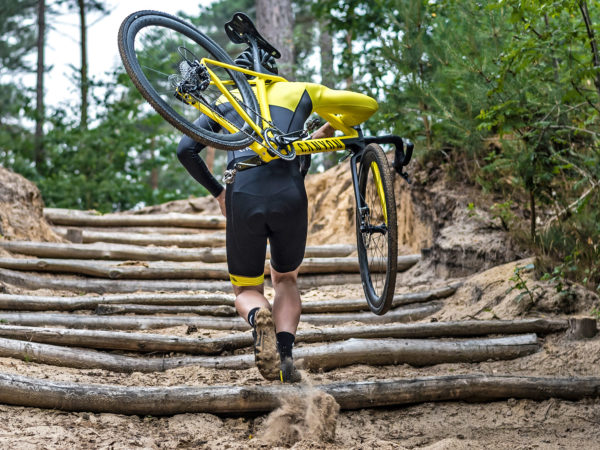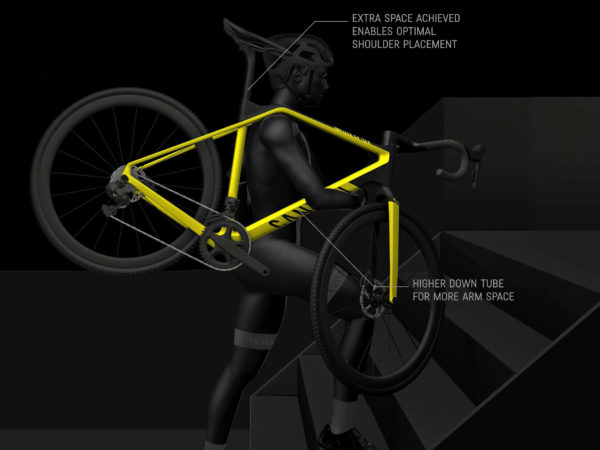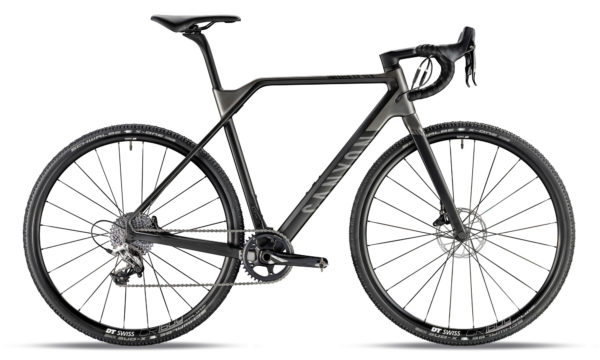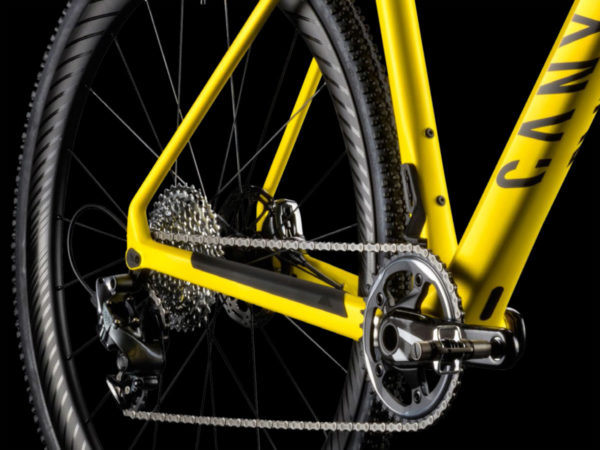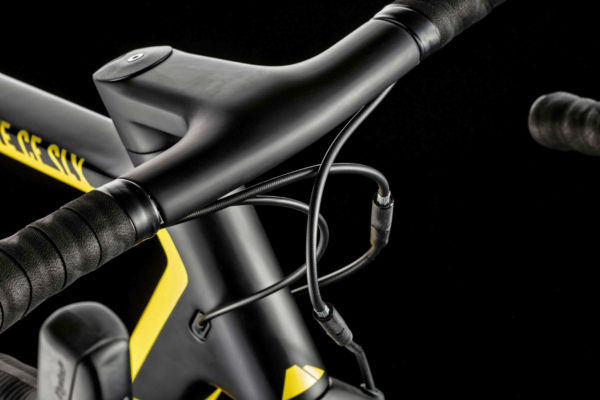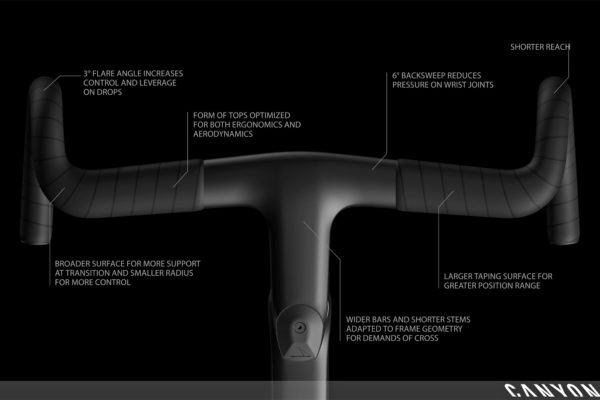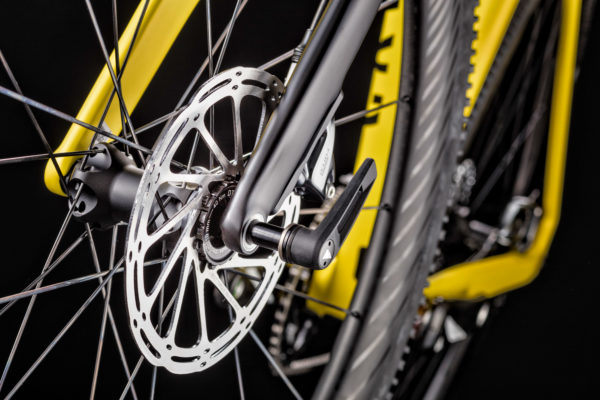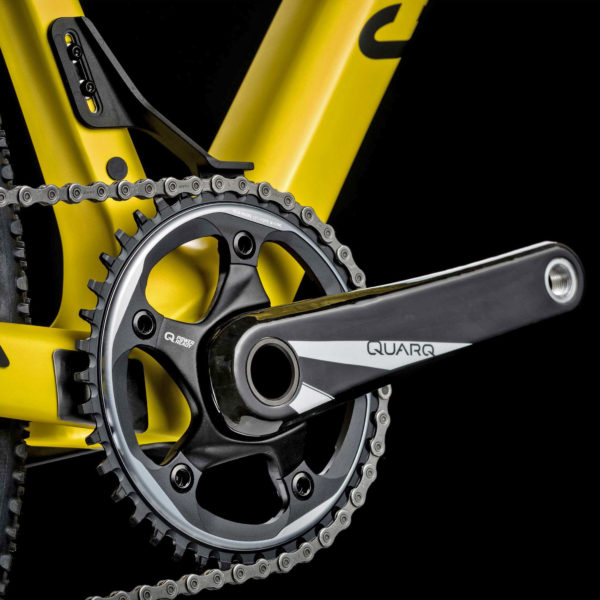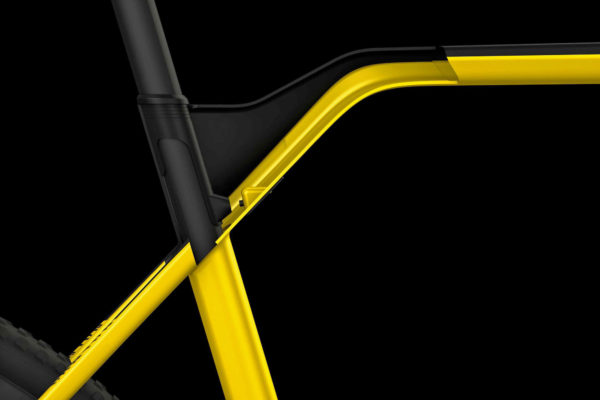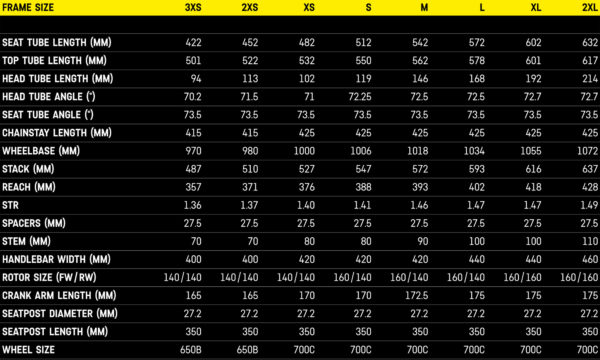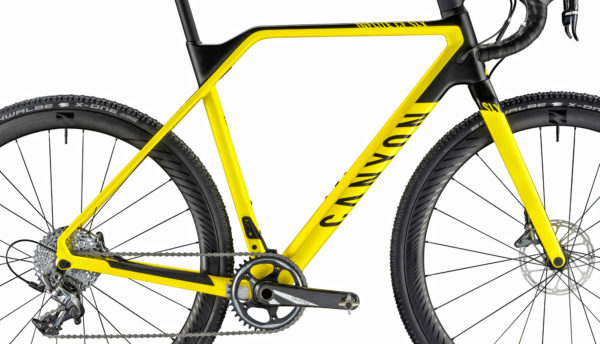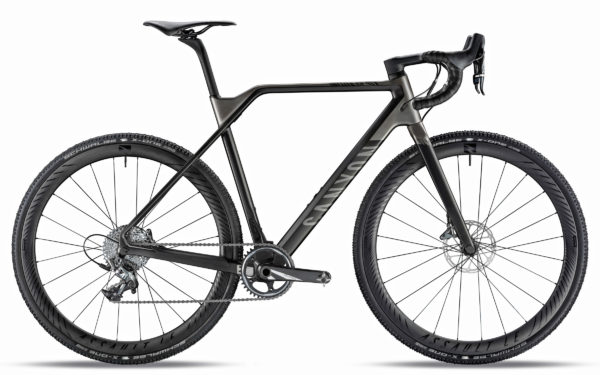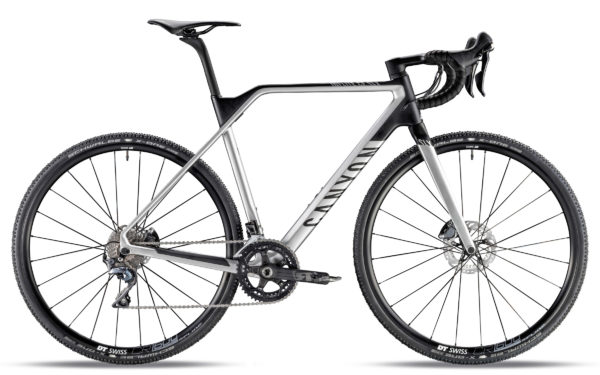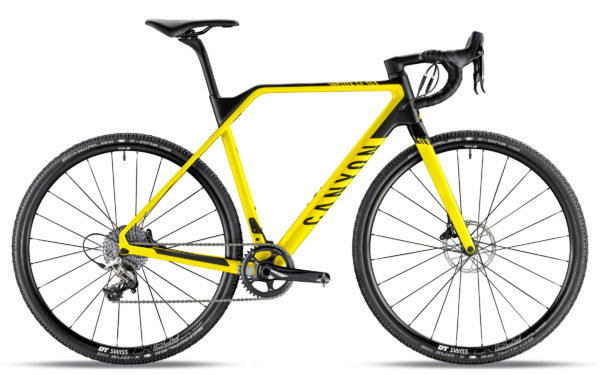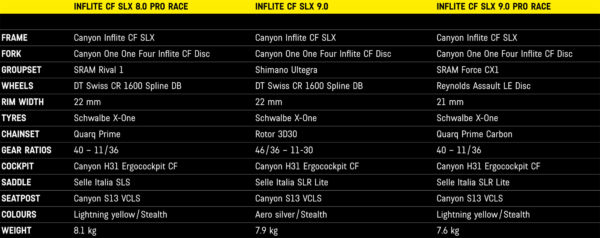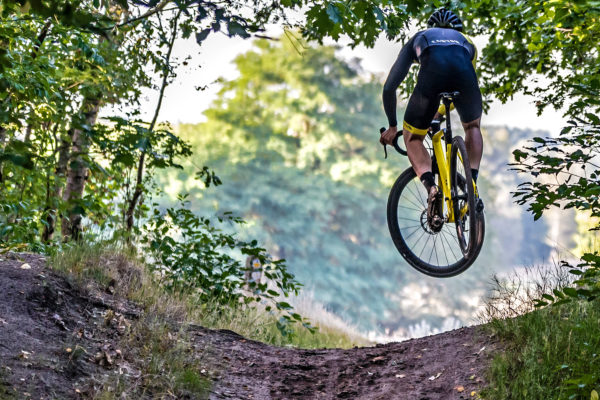A carbon cyclocross bike from Canyon has finally taken flight. The completely new Inflite CF SLX was an inevitability as their aluminum Inflite had continued to be a big, high-value seller. And now with the imminent arrival of Canyons in the US later this month! they really had to get on the ball to fuel that American #crossiscoming fire. The new carbon Inflite builds on CX race geometry honed on the alloy bike and makes the jump to Canyon’s top-level CF SLX carbon construction for both light weight & race-ready stiffness…
Canyon Inflite CF SLX carbon cyclocross bike
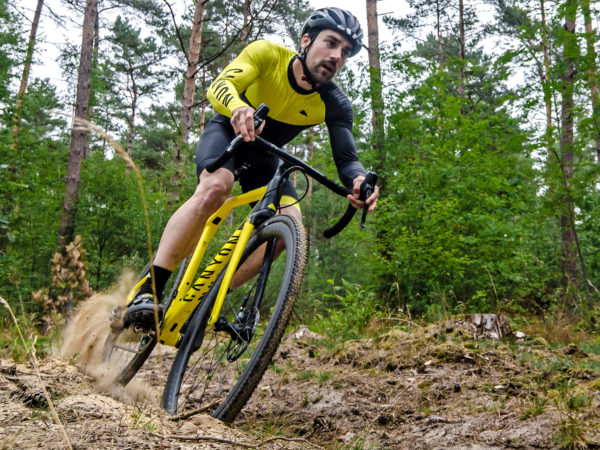
The carbon Inflite definitely builds on the previous alloy bike getting a whole host of updates, much of it focused on adapting to more technical cross courses and races that keep getting faster. The material change – and jump straight to Canyons top-level CF SLX fiber mix – meant a bike that is both light at 940g (size M) and strong enough for cross abuse.
The Inflite CF SLX gets a unique frame shape that Canyon says is based on a patented carrying system to make shouldering the bike more comfortable. Instead of using sloping geo, the kinked top tub gives an extra 37mm/1.5″ of space to get it over your shoulder, while generally keeping the same standover just in front of the saddle.
While geometry is adapted from its alloy, Canyon says they took inspiration from the improved ride of modern trail bike updates. The carbon cyclocross bike goes for a longer fit, adding about 15mm of reach across all frame sizes, while also resizing the stack numbers for better fits at either end of the size extremes.
At the same time the carbon Inflite actually gets a 1/2° steeper headtube angle with a bit of extra fork offset. Even if it is getting longer & more stable, it is a race bike first, and needs to dive quickly through the corners.
Tech details
Of course the move to carbon gave the design engineers more to play with. So keeping the same 425mm chainstays, the Inflite CF SLX gets improved mud clearance for when races get nasty.
Canyon is also all about integration, so all of the complete bikes get their full carbon bar/stem combo – the H31 Ergocockpit CF. That limits easy adjustability and you’ll need to buy one of their mounts for your Garmin, but it does lighten things up a bit and claims more comfort as well.
Canyon reworked the size & shape a bit to better suit cross races though. And they promise it will survive getting beat around off-road a bit, offering a stiffer race-worthy cockpit setup.
Standards-wise the Inflite CF SLX gets 12mm thru-axles, Canyon’s removable axle QR lever, and direct mount disc brake calipers.
The bikes are 1x or 2x friendly with a high front derailleur direct mount that the 1x bikes use for a light 13g chain catcher.
Modular internal cable routing is all sealed against mud& water ingress, with the bikes getting a press fit BB, an internal wedge-style seatpost clamp, and a stainless plate to protect against chain sucks. By dropping the seatpost clamp down inside the front triangle, Canyon says they added up to 110mm of effective seatpost extension for more deflection & comfort.
Geometry
Then new carbon Inflite CF SLX will be available in a broad eight size range from a tiny 42cm long seattube XXXS, up to a rangy 63cm XXL. By coming down to a new 3XS frame for the carbon cyclocross bike, Canyon is looking to cater to riders from 152cm/5’0″ who may have not yet been able to get a cyclocross bike that properly fit them.
To keep the same proper cross race handling & avoid toe overlap (which is actually an issue in slow, techy CX turns) the two smallest sizes get 650B wheels. Tires & wheels had been the biggest obstacle for those smaller road wheel sizes, but it looks like the tides have shifted, partly thanks to some work by Schwalbe.
Three complete builds of the new carbon crosser are on offer, plus a frameset option if you want to build up your own UCI certified race bikes. Each will get a colorful option or a Stealth black & gray version.
Complete bike builds
Those three builds include the top Inflite CF SLX 9.0 Pro Race for 4000€ with a SRAM Force CX1 group, a power meter-ready carbon Quarq crank, and Reynolds Assault LE tubeless-ready carbon wheels.
The 3200€ Inflite CF SLX 9.0 swaps in a Shimano Ultegra mechanical double groupset with 46/36 rings on a Rotor 3D crankset and a set of alloy, tubeless DT Swiss wheels.
For just 2800€ you get the Inflite CF SLX 8.0 Pro Race that gets a Rival 1 drivetrain, alloy Quarq prime crank, and alloy DT tubeless wheels.
And the best part of all, the Inflite CF SLX range is available right now (well, at least in Europe.)
But the Americans won’t have to wait long as we’ve heard talk that the Canyon USA website will be going live for ordering before the start of September 2017.

